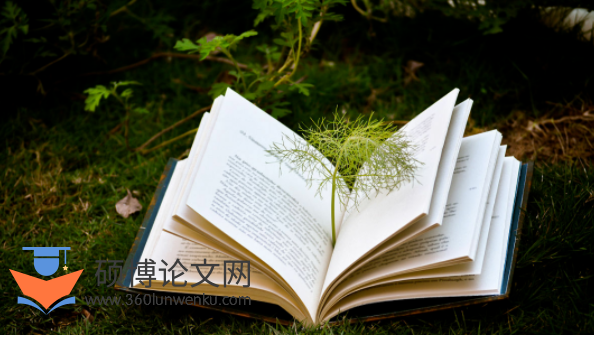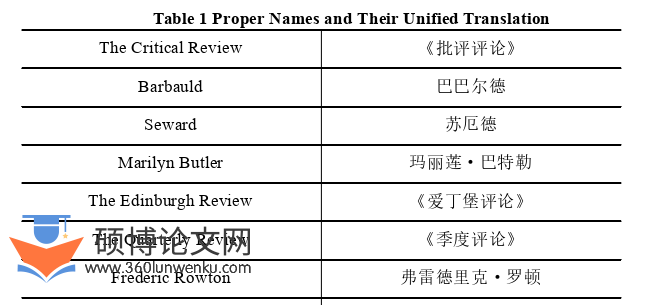本文是一篇英语论文,本翻译实践以尤金•奈达的“功能对等”理论为指导,探索该理论在词汇、句法、篇章、文体翻译方面的运用策略,总结以浪漫主义女性诗歌为主题的文学批评类文本的翻译方法和技巧,以求译文达到忠实、通顺,让读者无障碍阅读。
Chapter One Task Description
1.1 Background of the Task
This translation task is recommended by the translator’s supervisor,who iscooperating with the teachers in the School of Chinese Literature for research.It isnecessary for the research team members to read literary criticism in Chinese.Thetranslator’s task is the translation of a part of the introduction and the translation of theHelen Maria Williams’part by Lia Guerra in the literary criticism text Romantic WomenPoets:Genre and Gender.The book is a collection of literary criticism,co-authored byLilla Maria Crisafulli and Cecilia Pietropoli,which includes many Romantic women poetsdescribed by literary criticism scholars,explaining the important roles played by women inthe construction of Romantic literature and the promotion of cultural diversity.At the sametime,this book also offers a timely contribution to Romantic literary criticism.

英语论文参考
..................................
1.2 Features of the Source Text
Literary criticism is an important component of literary activities,originating fromliterary works and also influencing literary creation.The style of literary criticism is indeeda rather complex issue.It is not as pure as the language of poetry,but rather lies betweendescriptive language and analytical language.The source text contains both objective facts,literary references,and subjective thoughts.Therefore,based solely on the selectedtranslation section,the translator believes that its language has both academic and literarycharacteristics.
The academic nature of literary criticism is reflected in its unique academic norms.Literary criticism has its own theoretical system,and each theory guides literary criticismwith different focuses.For example,formalist critics focus on the intrinsic aesthetics of literary works,and historicist critics focus on the connection between works and theirhistorical background.At the same time,literary criticism bears the mission of helping andguiding readers to read,and enhancing their social aesthetic appreciation.Literary criticsneed to write according to academic principles and laws,and accept supervision andcriticism from readers and society.Both literary creation and criticism must follow thecharacteristics and laws of literature and art itself.If one crosses boundaries or violatesrules at will,it will lead to the loss of the original intention of literature or criticism.
.......................
Chapter Two Process Description
2.1 Preparations
Although the translator only selects a small part of the book Romantic Women Poets:Genre and Gender,she goes over the entire book to deeply understand the languagecharacteristics and style of the source text,and grasp the overall structure of the selectedpart.The source text involves romanticism,with a literary and historical background,suchas radicalism and the Bluestockings.Although the translator has taken elective courses ofEuropean and American literature and has exposure to Romanticism during undergraduatestudies,it is ultimately limited.And more specifically,the task involves Romantic femalepoets.Some of the names of the authors and poets mentioned in the book either could notbe found on the internet or were only briefly mentioned.Fortunately,the translator’ssupervisor recommends some works and points out the research direction for the translator.In addition,the translator consults relevant literature through other channels,such assearching China National Knowledge Infrastructure.The translator consults relevantliterature on functional equivalence theory and attends theoretical courses by famousteachers,gaining a deeper understanding of this theory.
In addition,the translator uses Oxford Dictionary,Oulu Dictionary,NetEase YoudaoDictionary,and other tools to search for new words and professional vocabulary,andmakes a list of proper nouns prepared before translation as shown in Appendix.
.......................
2.2 Translating
After finishing the preparations before the translation,the translator consults famoustranslation books to review translation methods and techniques,paying particular attentionto translating from the perspectives of vocabulary,syntax,text,and style.The translatorstrives to fully understand the translation materials and express the original author’s writing ideas through processing.
However,the translator encounters many problems during the translation process.Firstly,the translation of specialized vocabulary,such as the names of some magazines.Even if the translator consults the dictionary and translation software,official translationscan not be found.Therefore,the translator consults relevant literature and makes a moreappropriate translation based on her understanding.Secondly,some sentences may not betranslated smoothly and have vague meanings.The translator reanalyzes the sentencestructure and consults relevant literature to identify key points in understanding themeaning of the sentences.Thirdly,there are semantic and logical connections within andbetween different parts of the source text.On the basis of understanding texts,thetranslator adopts some methods to tightly integrate them.Finally,a stylistic analysis ofliterary criticism texts is done.According to the analysis of the source language in ChapterOne,it can be seen that literary criticism texts have literary and academic qualities,and thetranslator finds a breakthrough point in aesthetic value,so she pays attention to therepresentation of aesthetic value of the source text in the target text during the translation.
............................
Chapter Three Theoretical Guidance ..................................... 5
3.1 An Overview of the Functional Equivalence Theory ........................ 5
3.2 Application of the Theory to the Translation ..................................... 6
Chapter Four Case Analysis ...................................... 8
4.1 Lexical equivalence ........................................... 8
4.1.1 Conversion ...................................... 8
4.1.2 Addition ...................................... 9
Chapter Five Conclusion ..................... 22
Chapter Four Case Analysis
4.1 Lexical equivalence
Words are the foundation for understanding sentence meaning,and the overallmeaning of a sentence can also affect the understanding of words.The translator mainlyuses part of speech conversion,addition of appropriate words,and words contextualizationto achieve lexical equivalence.
4.1.1 Conversion
In translation,conversion refers to the process of transforming the language units orstructures of the source text into language units or structures with similar,corresponding,or heterogeneous properties in the target language.At the lexical level,this type ofconversion mainly involves conversion of part of speech.
Example 1:
ST:A century ago-notwithstanding we had never been altogether without femaleattempts,and those occasionally successful-it was still thought wonderful in Englandthat a woman should versify...(Appendix A:25)
TT:一个世纪前,尽管女性做过尝试,偶尔有人也获得过成功,但在英国,女性作诗仍然令人感到稀奇……(Appendix B:25)
This sentence includes the class conversion of parts of speech of two words,“successful”and“wonderful”.The statement of double negation“had never”,“without”expresses affirmation“做过尝试”.It is obviously not concise to translate theminto“偶尔尝试成功”、“人们仍然认为稀奇”.Therefore,the part of speech of these twowords are converted from adjectives to verbs“获得过成功”、“令人感到稀奇”,simultaneously consistent with the former“做过尝试”.In this way,lexical equivalence is achieved.

英语论文怎么写
................................
Chapter Five Conclusion
The translator has gained a lot from the translation practice.
First of all,she has read a lot of literature about Romantic poetry in English andAmerican literature when translating the selected text.When it comes to romanticism,everyone will associate it with famous male poets such as John Keats,WilliamWordsworth,Percy Bysshe Shelley,but the translator has a better understanding of femalepoets such as Mary Tighe,Helen Maria Williams,and Joanna Baillie.They are not knownto most people,and some search engines in China we cannot even find their names,letalone their lives.They co-founded Romanticism with male poets,and some male poetseven created their own works under the influence of female poets.In fact,Romanticliterature was developed through the joint efforts and mutual influence of male and femalepoets.Against the backdrop of gender discrimination at that time,the tremendouscontributions made by these female poets to romanticism are even more admirable to thetranslator.
By applying the theory of functional equivalence to guide the translation of literarycriticism texts,and based on case analysis,the translator has summarized some translationtechniques.In terms of lexical equivalence,she used conversion,addition,andcontextualization.The first two are the most basic and common translation methods,whilethe last one is the most essential translation method.In terms of syntactic equivalence,she used division of sentences and change of sentence order to solve the translation of longand difficult sentences.The former divides sentences according to grammatical andsemantic components and connects words in order for translation;The latter divides asentence into many parts and translates them in a disordered order according to the needsof Chinese meaning.
reference(omitted)
